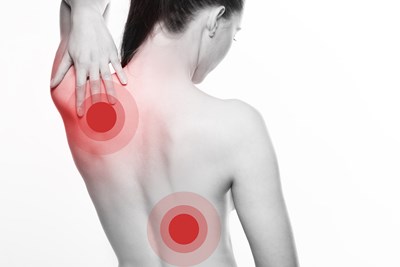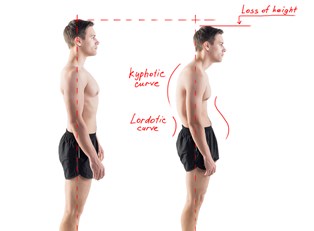Scoliosis is a condition in which a person’s spine curves sideways, creating an “S” or a “C” shape. While most cases of scoliosis are mild enough to not warrant treatment, in severe cases patients may require the use of a back brace and extensive surgeries.
Most patients with scoliosis develop the condition during or immediately before puberty, but some people may not develop it until adulthood. The following is a general overview of this condition—including its causes, symptoms, and potential treatments.
Scoliosis Causes
In most instances of scoliosis, doctors are unable to determine an exact cause for the condition, and this is known as idiopathic scoliosis. However, there is some research to support the idea that idiopathic scoliosis may be related to genetics—as it often occurs in multiple people from the same family.
Other types of scoliosis, while rarer than the idiopathic variety, have more definitive causes. For example, neuromuscular scoliosis is a result of birth defects that develop in the womb. People with conditions such as cerebral palsy, Marfan’s disease, and muscular dystrophy often have this form of scoliosis. On the other hand, degenerative scoliosis occurs later in life and worsens over time. Bone spurs, osteoporosis, or physical injuries are all possible causes of this form of the condition.
Scoliosis Symptoms
When it comes to idiopathic scoliosis, symptoms in the early stages may be barely noticeable. However, as the condition progresses into its later stages, certain telltale signs begin to appear. For example, patients with scoliosis often find that their clothing does not fit like it used to, due to the curvature of their spine. Additionally, one shoulder may begin to slouch lower than the other, or conversely, one hip may start to rest higher than the other. As the disease progresses even more, the spine will begin to take on a distinct curve and the patient’s ribs may protrude more than usual.
When scoliosis develops in children and teenagers, these symptoms are typically not painful. If a patient in this age range does experience pain, it’s typically because of the pressure that the spinal curve places on the individual discs. However, pain may also be an indicator of a more serious condition, such as a tumor on the spine. For adults, scoliosis is more likely to cause back pain, and in severe cases it may even prevent them from breathing normally.
Scoliosis Treatments
For people with only a mild form of scoliosis, treatment may not be necessary at all. However, regular checkups are encouraged in order to ensure that the condition has not progressed—this is especially important for children whose spines have not fully developed yet.
In more serious cases of scoliosis among children, some sort of brace may be necessary. Braces won’t reverse the damage already done by the condition, but they can prevent further damage from occurring. There are two primary forms of braces that are used to treat scoliosis—underarm and Milwaukee. Underarm braces are worn underneath clothing and help to reduce curves that occur in the lower sections of the spine. On the other hand, Milwaukee braces provide much more extensive support. They stretch the entire length of the spine, from the top of the neck to the pelvis and are worn outside of clothing. These braces are used for patients whose spinal curves are too high to be treated by an underarm brace.
In severe cases of scoliosis, surgery may also be necessary. Most commonly, this involves fusing together two or more of the spine’s vertebrae and inserting metal rods so that the spine is prevented from curving more than it already is. Surgeries such as these are typically delayed until after a child’s spine has stopped growing to prevent further developmental damage.



